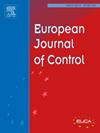Towards fully autonomous orbit management for low-earth orbit satellites based on neuro-evolutionary algorithms and deep reinforcement learning
IF 2.5
3区 计算机科学
Q2 AUTOMATION & CONTROL SYSTEMS
引用次数: 0
Abstract
The recent advances in space technology are focusing on fully autonomous, real-time, long-term orbit management and mission planning for large-scale satellite constellations in Low-Earth Orbit (LEO). Thus, a pioneering approach for autonomous orbital station-keeping has been introduced using a model-free Deep Policy Gradient-based Reinforcement Learning (DPGRL) strategy explicitly tailored for LEO. Addressing the critical need for more efficient and self-regulating orbit management in LEO satellite constellations, this work explores the potential synergy between Deep Reinforcement Learning (DRL) and Neuro-Evolution of Augmenting Topology (NEAT) to optimize station-keeping strategies with the primary goal to empower satellite to autonomously maintain their orbit in the presence of external perturbations within an allowable tolerance margin, thereby significantly reducing operational costs while maintaining precise and consistent station-keeping throughout their life cycle. The study specifically tailors DPGRL algorithms for LEO satellites, considering low-thrust constraints for maneuvers and integrating dense reward schemes and domain-based reward shaping techniques. By showcasing the adaptability and scalability of the combined NEAT and DRL framework in diverse operational scenarios, this approach holds immense promise for revolutionizing autonomous orbit management, paving the way for more efficient and adaptable satellite operations while incorporating the physical constraints of satellite, such as thruster limitations.
基于神经进化算法和深度强化学习实现低地轨道卫星的完全自主轨道管理
空间技术的最新进展主要集中在为低地轨道(LEO)上的大型卫星群提供完全自主、实时、长期的轨道管理和任务规划。因此,一种开创性的自主轨道站保持方法已被引入,该方法采用了明确为低地轨道量身定制的无模型深度策略梯度强化学习(DPGRL)策略。为了满足低地轨道卫星群对更高效、更自律的轨道管理的迫切需求,这项研究探索了深度强化学习(DRL)与增强拓扑神经进化(NEAT)之间的潜在协同作用,以优化定点保持策略,其主要目标是使卫星能够在允许的容差范围内,在出现外部扰动时自主保持轨道,从而在整个生命周期内保持精确一致的定点保持,同时大幅降低运营成本。这项研究专门为低地球轨道卫星量身定制了 DPGRL 算法,考虑到了机动的低推力约束,并集成了密集奖励方案和基于域的奖励塑造技术。通过展示 NEAT 和 DRL 组合框架在不同运行场景中的适应性和可扩展性,这种方法有望彻底改变自主轨道管理,为更高效、适应性更强的卫星运行铺平道路,同时将推进器限制等卫星物理限制因素纳入其中。
本文章由计算机程序翻译,如有差异,请以英文原文为准。
求助全文
约1分钟内获得全文
求助全文
来源期刊

European Journal of Control
工程技术-自动化与控制系统
CiteScore
5.80
自引率
5.90%
发文量
131
审稿时长
1 months
期刊介绍:
The European Control Association (EUCA) has among its objectives to promote the development of the discipline. Apart from the European Control Conferences, the European Journal of Control is the Association''s main channel for the dissemination of important contributions in the field.
The aim of the Journal is to publish high quality papers on the theory and practice of control and systems engineering.
The scope of the Journal will be wide and cover all aspects of the discipline including methodologies, techniques and applications.
Research in control and systems engineering is necessary to develop new concepts and tools which enhance our understanding and improve our ability to design and implement high performance control systems. Submitted papers should stress the practical motivations and relevance of their results.
The design and implementation of a successful control system requires the use of a range of techniques:
Modelling
Robustness Analysis
Identification
Optimization
Control Law Design
Numerical analysis
Fault Detection, and so on.
 求助内容:
求助内容: 应助结果提醒方式:
应助结果提醒方式:


